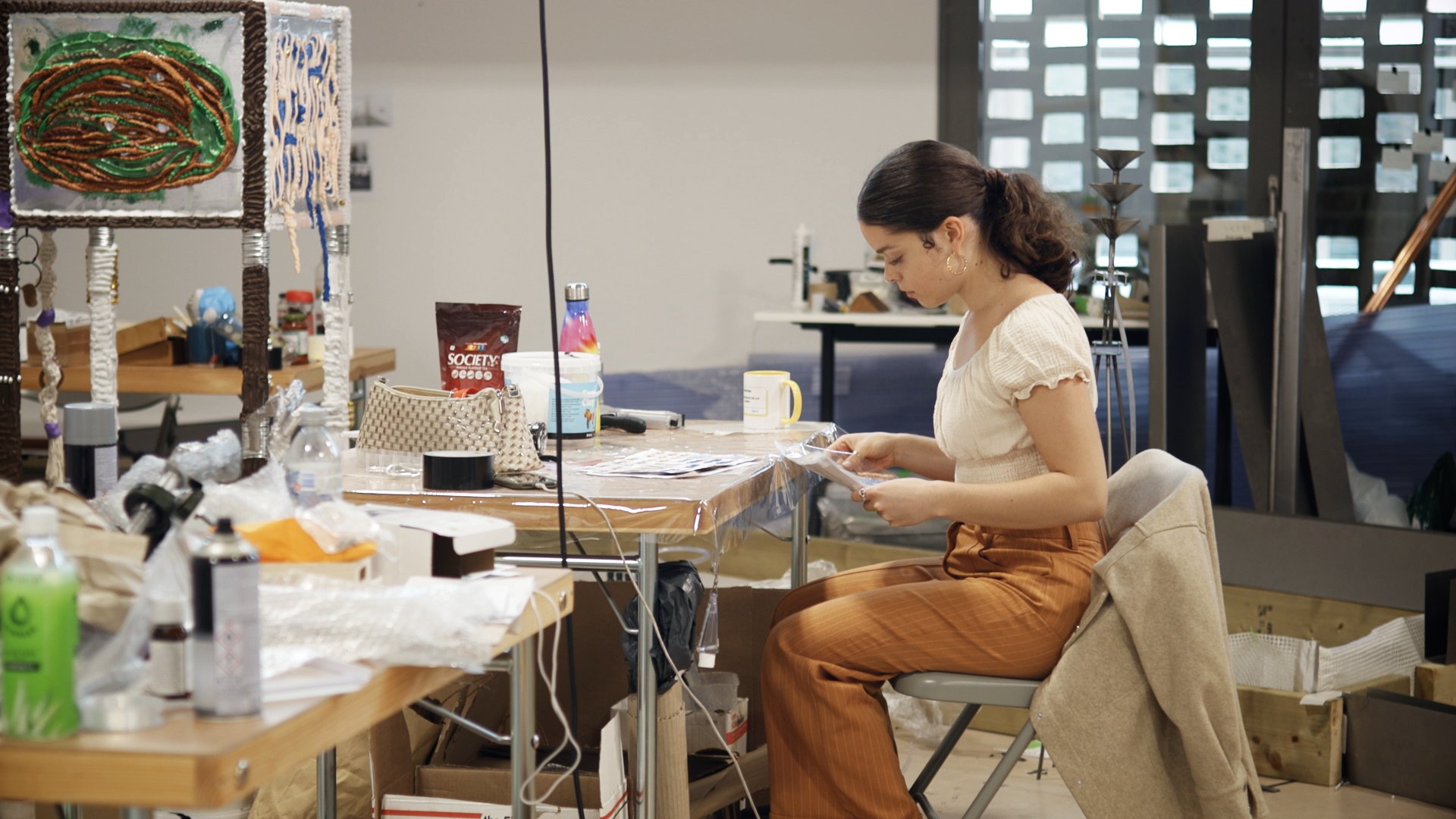
Key details
Date
- 19 June 2023
Author
- RCA
Read time
- 3 minutes
Our MA Sculpture student Theresa Weber grew up in Germany. She creates sculptures that weave together cultures and identities. She told us about working in our sculpture studio and a big commission at Somerset House.

Hi Theresa. Can you tell us a bit about yourself and what brought you to the RCA?
So I grew up in Germany. And I studied art at Kunstakademie Düsseldorf before moving to London. My background is in painting but my work is pretty sculptural.
What inspires your work?
I'm very influenced by reading. Especially by Édouard Glissant and Caribbean discourse, because I have a partly Caribbean background. I am inspired by the way he uses motifs from nature to describe complex situations and cultural reinvention. And poetry. I see my work as poetry as well.

“It's the tradition that’s transforming through twisting, knotting, weaving.”
How does cultural reinvention manifest itself in your work?
So I think my work is basically rooted in this network of opposed things. And then through mixing these different influences, I try to re-invent them to keep them alive. It’s the tradition that’s transforming through twisting, knotting, weaving. But also through found materials that are body extensions. For instance fingernails, pearls, jewellery, synthetic hair, and then also language and texts as body extension.
Can you tell us about your new commission at Somerset House?
Yes. I've been invited to produce the Morgan Stanley Commission at Somerset House this year. There will be a very large thirteen metre sculpture, the biggest sculpture I've ever made. It will be activated by a sound performance by Nathanael Amadou Kliebhan from MA Information Experience Design and myself, with two other performers walking the space wearing my costumes and reacting to the sound.
What's a typical day like at the RCA?
Usually I wake up and do my emails and errands, then breakfast. And then I go to the studio, work for a couple of hours, have lunch in the studio, or go for lunch with a friend. And then I keep working. Often in the evenings I go to openings or events.
And I do yoga – that's very important. And meditation.
What’s the best thing about being at the College?
I think it's a pretty magical space, with this energy that you most likely don't get again in life. You work next to like-minded people and you can immediately talk about things, exchange thoughts and push your practice further. It's motivating to come back every day and see everyone. It’s different from having a studio by yourself.

“I believe in complex, nuanced, layered identities and fluidity.”
What’s changed your work most from your time here?
Visiting Tutors have really pushed me further in the way I approach my practice. But the main thing is collaboration, like my work with Nathanael for Somerset House.
Would you say your work has a definitive purpose?
Yes, it’s purpose is to give space. And to connect people with a similar experience of a mixed background. It works against dualism and fixed identity. I believe in complex, nuanced, layered identities and fluidity. Becoming a different person in every room and every space – and being allowed to transform. My work has a poetic purpose with a political nuance.

Does history inspire your work?
There are a lot of mythologies that I refer to, and biographies. I've been working with Ludwig van Beethoven and using his death mask as print because I found out that he might have had a bi-racial background. I thought that would be a very powerful symbol, because he's one of these German idols. Even if it's not true, I think the thought and the possibility is pretty strong.
I also use a lot of female Goddess figures from mythologies such as Ishtar, an ancient Mesopotamian Goddess. She's a Goddess of war, but also of fertility. And she's able to transform and appear male and female.
“Everyone comes here with an open mindset and energy.”

Altar Window by Theresa Weber for Bloomberg New Contemporaries 2022
You were part of Bloomberg New Contemporaries last year, what was that like?
Yeah. Bloomberg New Contemporaries was an amazing experience. I was very happy to be part of it. The first show was in Hull. Then we exhibited at the South London Gallery. I gave an artist talk, workshop and did a collaborative performance with Nathanael Amadou Kliebhan for the last day of the show, which was great.
And has London changed your practice?
Being in London has changed my practice in terms of putting myself in a more international network. I have been inspired by like-minded people and gained an understanding of the purpose of my practice, who I want to be and the way I look at my practice in society.
Everyone comes here with an open mindset and energy. They are willing to change something, to connect, to get things done. There is just a big energy and it's very easy to find a community.